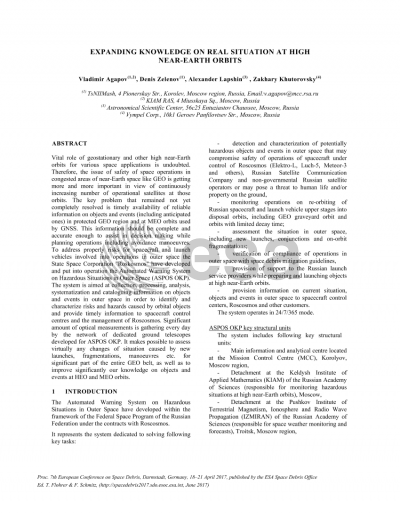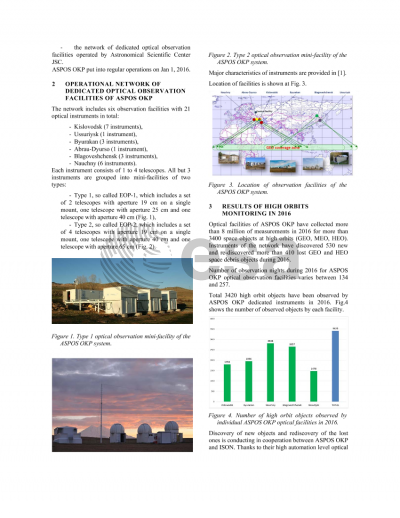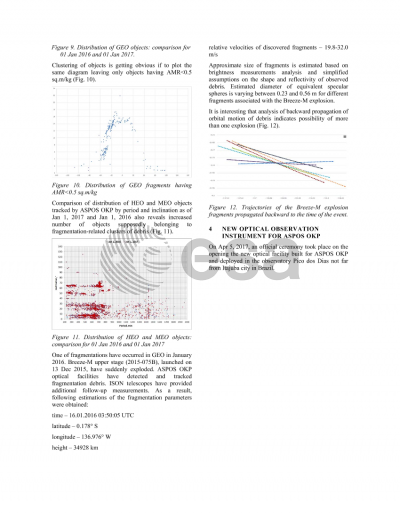Document details

Abstract
Vital role of geostationary and other high near-Earth orbits for various space applications is undoubted. Therefore the issue of safety of space operations in congested areas of near-Earth space like GEO is getting more and more important in view of continuously increasing number of operational satellites at those orbits. The key problem that remained not yet completely resolved is timely availability of reliable information on objects and events (including anticipated ones) in protected GEO region and at MEO orbits used by GNSS. This information should be complete and accurate enough in order to assist in decision making while planning operations including avoidance manoeuvres. To address properly risks for spacecraft and launch vehicles involved into operations in outer space the State Space Corporation "Roskosmos" have developed and put into operation the Automated Warning System on Hazardous Situations in Outer Space (ASPOS OKP). The system is aimed at collection, processing, analysis, systematization and cataloguing information on objects and events in outer space in order to identify and characterize risks and hazards caused by orbital objects and provide timely information to spacecraft control centers and the management of Roscosmos. Significant amount of optical measurements is gathering every day by the network of dedicated ground telescopes developed for ASPOS OKP. It makes possible to assess virtually any changes of situation caused by new launches, fragmentations, manoeuvres etc. for significant part of the entire GEO belt, as well as to improve significantly our knowledge on objects and events at HEO and MEO orbits.
Current status and plans for further development of the ASPOS OKP will be presented. Results of analysis of achieved performance characteristics (in terms of number of objects being tracked, accuracy of orbit determination for objects with different orbital behavior, efficiency of detection and tracking of new objects, including those originated from new launches) will be discussed. Statistics derived from our orbital archive for objects at various high altitude orbits and having different physical properties will be provided.
Preview






